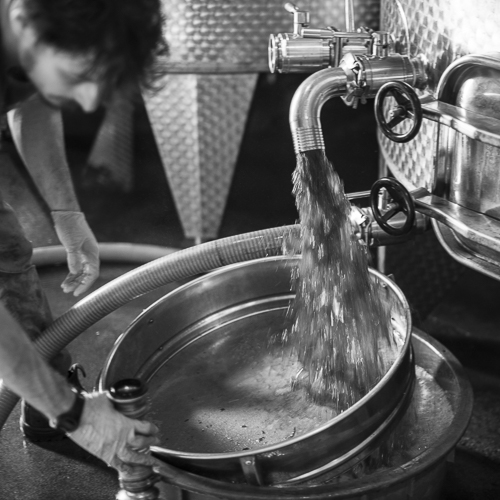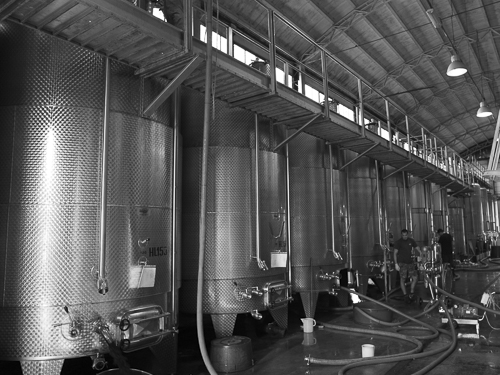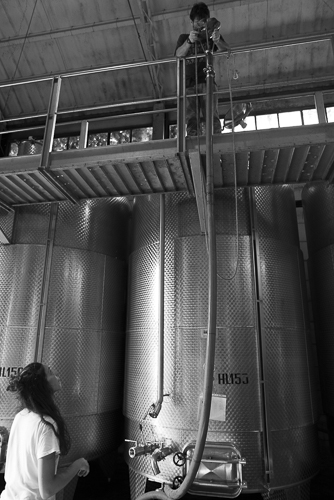
I visited this farm in November 2016 as described here.
La Parrina was founded in 1830, it’s a large farm and it’s necessary to return several times at different times of the year in order to see how they are cultivating, producing, transforming and selling their products in order to get at least a general idea of what they are doing.
Moreover, the manor, which was housing the Giuntini-Spinola family, forms such a large part of the farm that it’s impossible to avoid it. Although it has been converted into a hotel and a restaurant, the furniture, interiors and exteriors seem to be more or less how they were almost 200 years ago. The hotel rooms, which still bear the names of the original owners, the terraces facing the gardens where guests at the restaurant can enjoy their meals, even listening to live music in summer. All this give visitors a sense of history and tradition.
Having returned in September, the harvesting of grapes take place, but also the initial process of turning the must in the grapes into wine. This time, some workers were assembling pumps, hoses and filters to recirculate the must, which had been extracted 2 weeks in advance from this year’s grape harvest. Being a large producer of wine, relatively speaking, the wine cellar had, say, 15-20 stainless steel tanks with a height of about 5 metres and a diameter of about 2 metres, in which the must was being stored.

There was a valve at the base of the tank and a lid on the top. By placing a filter and a container below the valve, and opening the valve, the must flowed out, passing the filter, which let the must pass, while stopping the pomace, consisting of solid parts like the skin of the grapes. At the same time, a pump was pumping the must in the container to the top of the tank where a worker was holding a hose such that it let the must pass through the hole at the top of the tank. In this way, the must was oxygenated, which aids the fermentation of the yeast and by letting the must pass the pomace, it also receives colours and fragrants from the pomace.

Having watched this work, we were invited to taste the must, which would be turned into the white wine Vermentino and the must, which would be transformed into the red wine Muraccio.
Next, the man responsible for the grape harvest offered us a ride to the vineyards, which were full of clusters of blue grapes. The rows of grapevines seemed to stretch to left and right for several hundred meters, while they also extended to the foot of the hills covered with dense Mediterranean maquis, a couple of hundred meters from the beginning of the rows.
The next day we should have been present at the grape harvest of Sangiovese, but it had been raining in the evening and the harvest was postponed. The grapes need to be dry when they are harvested because rainwater will dilute the must. In addition, the grapes need lots of sunlight and heat to mature and fresh nights during which the maturation slows down and the grapes are resting.
This farm has an extension 450 hectares of Mediterranean maquis and 250 hectares of cultivable land. 56 hectares are used for growing grapevines.
We also visited the well-assorted farm shop https://www.parrina.it/en/shop-and-products.htm where a large selection of organic fruit and vegetables grown at the farm are sold.
We finished our stay at La Parrina drinking wine and eating typical dishes of the house on the terrace facing the garden surrounding the former manor, all of us together, teachers and students of the Terramare language school. It was a great pleasure eating together in such august surroundings, reminding us of the atmosphere of times past when the original owners were enjoying an evening outside with their friends and guests.
